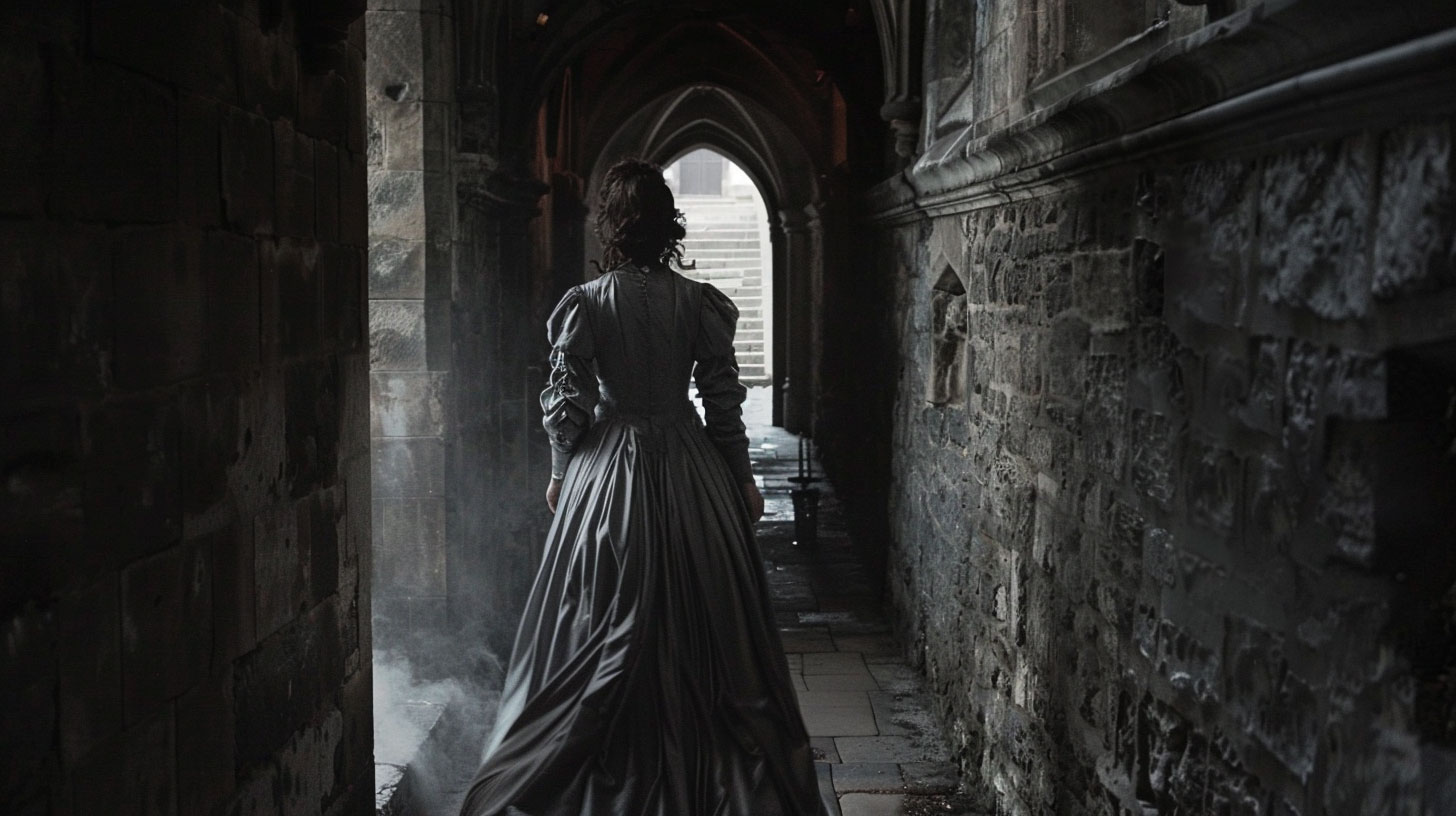
The Legend of the Grey Lady of Edinburgh Castle
Edinburgh Castle, perched on its volcanic crag, has watched over the city for more than a millennium. Within its walls, monarchs have been crowned, prisoners executed, and armies laid siege. But alongside the battles and pageantry, another story endures — one not written in records but whispered in corridors.
This is the tale of the Grey Lady of Edinburgh Castle, a ghost said to drift through its ancient chambers. Unlike the castle’s darker phantoms — the headless drummer or the restless prisoners — she is remembered as a figure of quiet sorrow. Her legend is less about terror than about memory, grief, and the softer echoes of the past.
A Castle Built on Stories
To understand the Grey Lady of Edinburgh Castle, one must first appreciate the sheer depth of history contained within its walls. Archaeology shows the site was used as a hill fort over 3,000 years ago. From then on, it became a royal residence, the seat of Scottish kings, a stronghold in wars of independence, a prison of war, and still today a military garrison.
With such an intensity of life and death, it is little wonder the castle has become a focus for ghost stories. Every stone has witnessed triumph and tragedy. The Grey Lady is part of that tapestry, not a single terrifying figure but a presence woven into the castle’s collective memory.
Who Was the Grey Lady?
Her true identity has never been established. Instead, folklore has offered several contenders, each reflecting the castle’s layered past:
- The Nanny Theory: Some tales suggest she was a governess who lived within the castle centuries ago. A tragic love affair with a soldier or the death of a child in her care left her stricken with grief. Her ghost, they say, wanders in search of forgiveness.
- The Noblewoman Theory: Others claim she was a lady of the court — perhaps one who served Mary, Queen of Scots, or another noblewoman tied to the palace. Her graceful appearance and her presence in the Royal Palace support this version. Some say she died of heartbreak, others in childbirth.
- The Piper Connection: Edinburgh has a famous tale of a piper who vanished beneath the Royal Mile tunnels. While that story usually refers to a male figure, some retellings link a female companion or waiting lover to the Grey Lady legend — though no historical evidence supports this.
What unites these theories is not proof but emotion: each casts the Grey Lady as a woman marked by loss, forever tied to the castle she once inhabited.
Where She Haunts
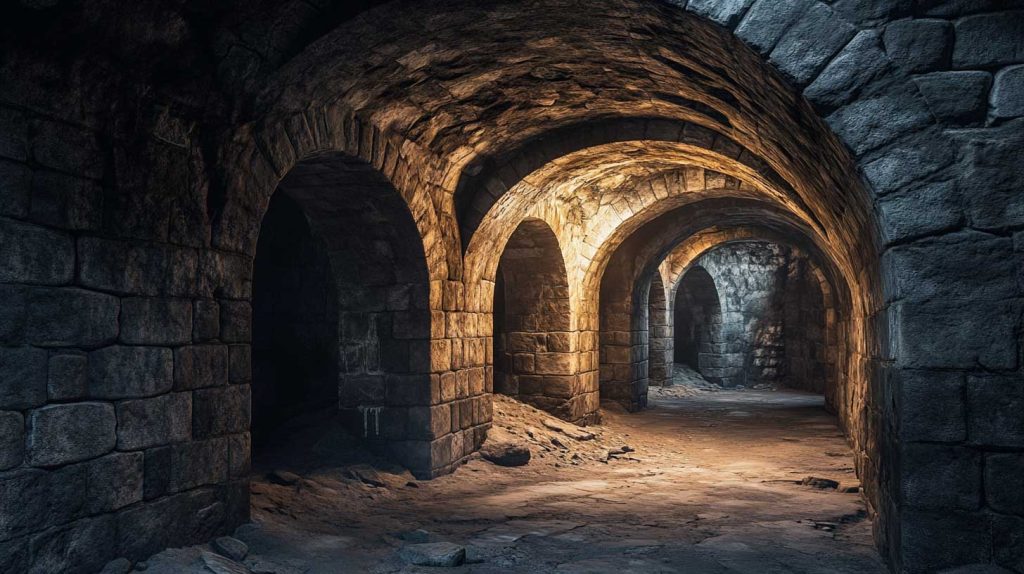
The Grey Lady of Edinburgh Castle is most often associated with David’s Tower, a 14th-century stronghold destroyed during the Lang Siege in 1573. Its ruins lie beneath today’s Half Moon Battery, an atmospheric, restricted area where many say her presence lingers.
She is also linked to the Royal Palace, where the monarchs of Scotland once resided. Staff and visitors report glimpses of her form gliding across rooms or passing through walls that no longer exist, as though she follows the memory of the building’s earlier layout.
Whether in the tower’s shadows or the palace’s grandeur, her appearances carry the same hallmark: quiet dignity tinged with melancholy.
The Sightings
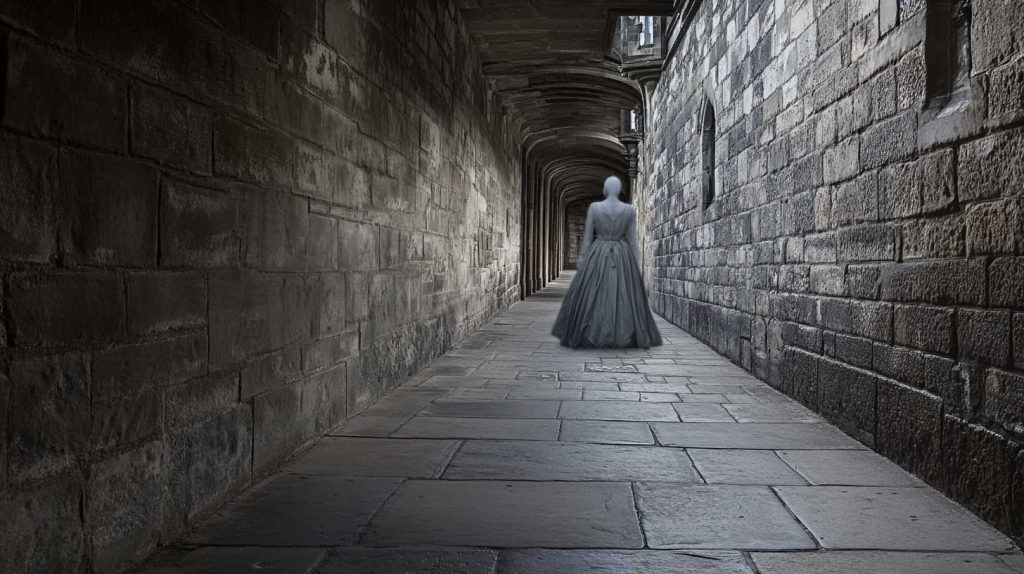
Accounts of the Grey Lady are remarkably consistent. Witnesses — from soldiers once stationed at the castle to modern staff — describe her as a woman in 16th or 17th-century dress, veiled in a misty grey aura.
She does not scream or threaten. Instead, she moves silently, sometimes pausing as though to gaze from a vanished window, sometimes standing motionless before fading into stone. Those who encounter her often describe a sudden stillness, a gentle chill, or a wave of calm sorrow.
In a fortress so often defined by violence and authority, the Grey Lady’s presence is an anomaly — a ghost of serenity rather than terror.
Why Her Story Endures
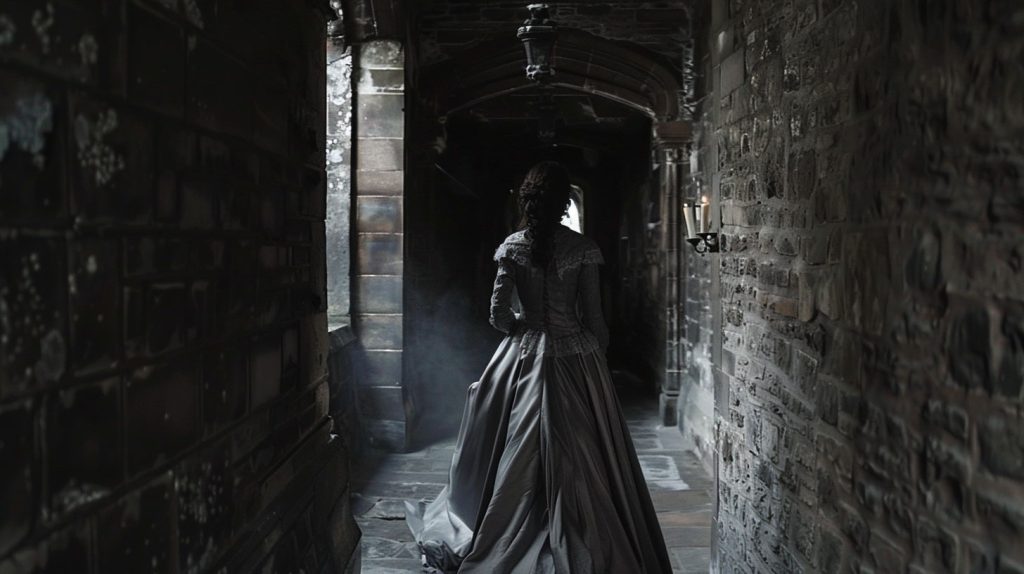
Why has the Grey Lady of Edinburgh Castle, among so many ghostly tales, become the most enduring? The answer lies not in fear, but in relatability.
She embodies sorrow — a universal emotion. Where the headless drummer terrifies and the prisoners horrify, the Grey Lady evokes empathy. She reminds visitors that the castle was not just home to kings and generals, but also to nannies, courtiers, servants, and ordinary lives that went unrecorded.
Her figure also offers a counterbalance to the castle’s masculine history of battles and sieges. She is the soft voice within the fortress walls, proof that not all hauntings need rage; some linger simply as memories of love, grief, and longing.
Fact vs. Fiction: Separating the Threads
FACT:
- Reports of a female, grey-clad apparition at the castle go back centuries.
- Sightings cluster around David’s Tower ruins and the Royal Palace.
- Descriptions remain consistent: dignified, translucent, dressed in historical attire.
FICTION:
- No historical evidence proves her identity.
- Stories of the nanny or noblewoman are folklore, not documented accounts.
- She is not malevolent, despite exaggerated portrayals in popular culture.
The Eternal Resident
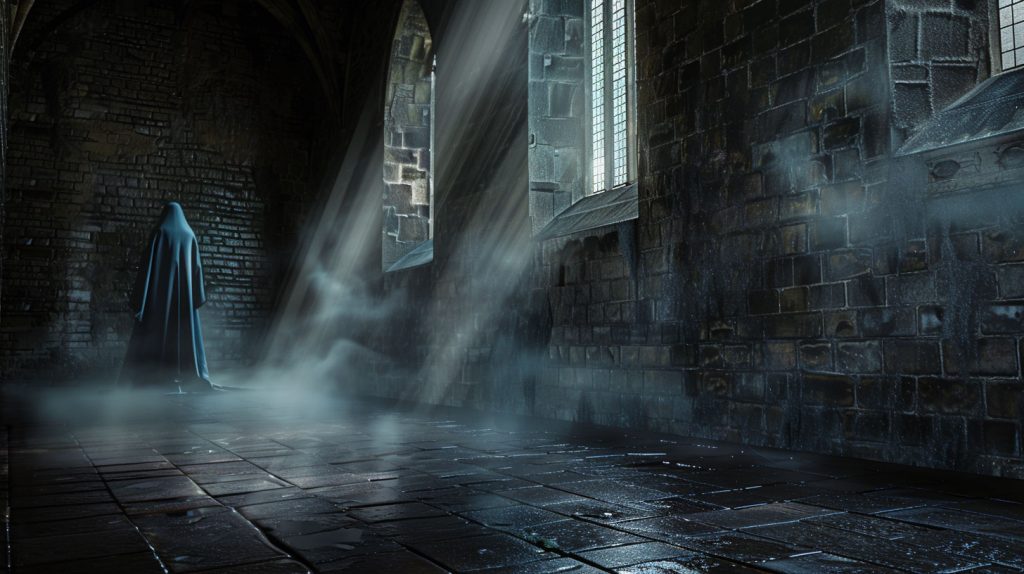
The Grey Lady of Edinburgh Castle endures because she embodies what all ghost stories truly represent: memory. She is not a headline figure of history, but a reminder of the countless unnamed people whose lives unfolded in the shadow of the fortress.
For centuries she has drifted through the castle, serene and sorrowful, her story woven into its very identity. If you ever feel a sudden calm while walking those ancient halls — a soft chill in the air, a fleeting shimmer in the corner of your eye — you may have brushed against the castle’s most gentle, eternal resident.









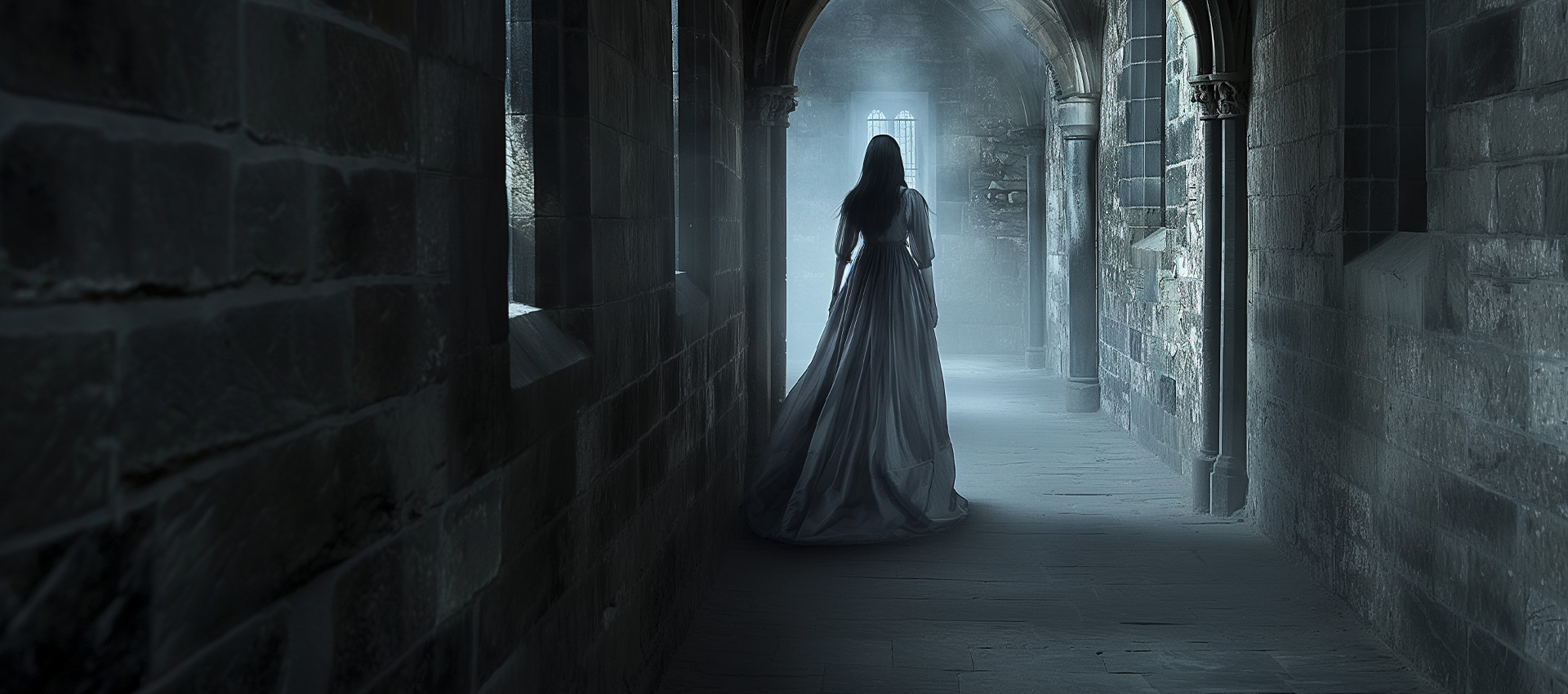
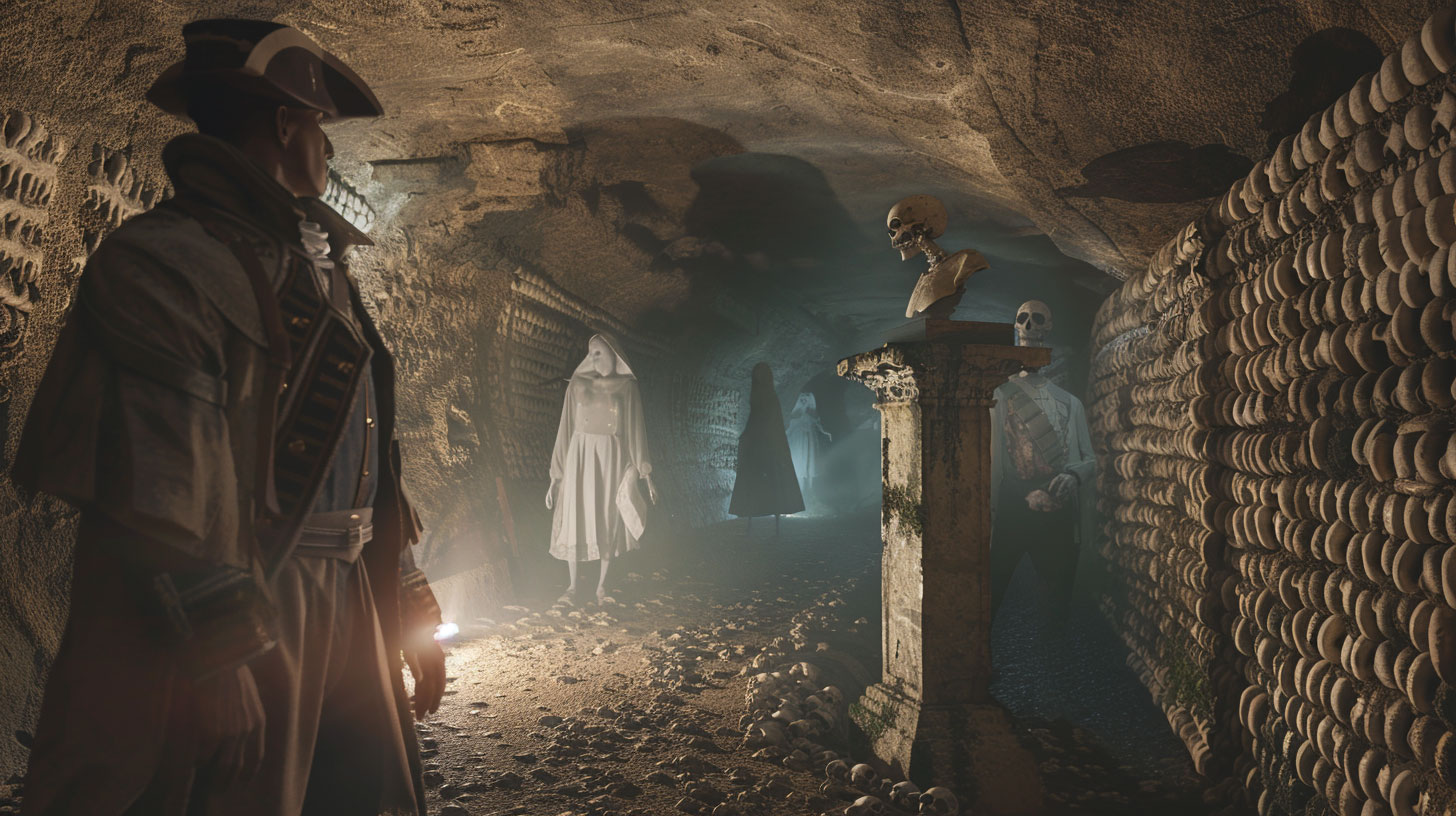



No Comments